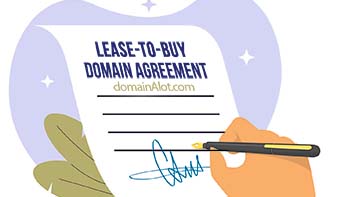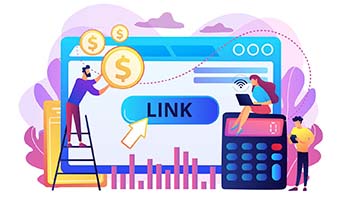Domain Name Leasing: A Good Strategy?
While Domain Leasing has become increasingly popular, it doesn't mean it's right for everyone

Domain Name Leasing is an increasingly practical solution for domain owners who hold valuable assets but don't necessarily want to sell them outright. As a revenue strategy, Domain Name Leasing makes perfect sense for the domain owner as it allows monetisation of a dormant, under utilised domain while keeping long-term control. For the lessee, startup, or growing business, Domain Name Leasing provides access to a Premium Domain without the heavy upfront cost. A win-win it would seem...?
Well, in many respects, yes, but essentially, this model works best when the domain in question is highly valuable or commercially relevant. For lower-value domains, the leasing approach tends to be less compelling and harder to justify for either party.
Let's Jump Straight In
At the core of a domain leasing strategy is recurring revenue.
That's it.
It's that simple... However, like all things "simple," the truth is generally anything but.
Motivation
For a domain owner, the cost of renewing domains year-on-year is not a diminishing one. In fact, annual renewal fees have jumped an estimated 200% in the past 5 years alone. That's bad news if you're an investor, because the cost of maintaining your portfolio has doubled.
And it's not just investors who feel the pinch. Ordinary domain owners who might once have thought about creating a startup or a brand and registered a domain to match, find themselves sitting with the annual renewal fee despite perhaps never launching their idea.
Faced with the harsh reality of learning that most of us have ideas, yet few of us are ever able to actually act upon them, a domain owner might first attempt to sell their asset.
"Simple," right?
Well, in 99,99% of all cases, the answer would be a total and resounding NO. The truth of today's market, flooded with domains, is that not only is it difficult to find the right buyer, but in the vast majority of attempts to do so, it is nigh-on impossible without giving away large amounts of revenue in commissions and fees that suddenly make any sale decidedly less profitable.
So, options become limited, and in those limitations, Domain Name Leasing gains fruition. Instead of waiting months, years, or even decades for the right, or indeed for any buyer, to appear, domain owners can offer their domains for a monthly or yearly fee.
The Mechanics Of Domain Name Leasing
The terms of any lease, whether it be for an apartment, motor vehicle, or domain, can vary based on value.
In the case of domains, industry relevance, top-level distinction, and type-in traffic, can all play leading roles in determining "value." And whatever value is ultimately reached, it is this figure that is used as a base-line for the lease.
This approach transforms a passive digital asset into a cash-flowing one, and many high-end domain investors look at leasing not just as a short-term income stream, but as a way to maintain asset appreciation while creating liquidity.
Upsides With No Pitfalls
For domain owners, the upside of Domain Name Leasing is clear. You retain full ownership while earning regular income. More importantly. You avoid the binary risk of pricing too high or too low in a sale and keep the flexibility to sell later if market demand increases.
Domains that are brandable, generic, or industry-defining like ImpossibleMedia.com, SmartHealth.io, or even category domains like PPT-Template.com, tend to perform well in lease negotiations because they have immediate branding utility for end users. And let's not forget, lease income can also be reinvested into acquiring new domains, supporting a growth loop within the domain owner's portfolio.
Lease-To-Own: A Path To Sales
Domain Name Leasing also keeps the door open for long-term buyout options. That's where the Lease-To-Own or Lease-To-Buy models become incredibly valuable.
Under a Lease-To-Own structure, a business leases a domain for a fixed term with an option, or obligation, to purchase the domain at a pre-agreed price after a certain period. This is especially attractive to startups or scaling companies who may not have the capital upfront but see long-term value in controlling their digital identity. It also makes sense for domain investors who want to lock in a future sale while collecting cash along the way.
What About The Lessee?
For the potential lessee, Domain Name Leasing literally opens the door to domains that might otherwise be unaffordable.
It's a model that allows the lessee to build brand equity, improve SEO rankings, and increase credibility right out of the gate without a six-figure investment. And as every business owner will tell you, the startup phase is always the hardest, mainly because funds are limited, and the ability to offset any costs, especially one such as domain investment, is one that can fund other business critical activities.
Leasing a Premium Domain Name often delivers more value on the buck than spending the same budget on paid ads or brand development. It also gives entrepreneurs time to validate their business idea before committing to a full purchase. In other words, the argument for Lease-To-Own, or Lease-To-Buy is a strong one, giving flexibility and security that would be otherwise difficult to achieve, particularly for any business owner still proving traction or in the midst of fund-raising.
One Size Does Not Fit All
Despite the seemingly overwhelming case for Domain Name Leasing, it's important to remember that one size does not fit all. By that, I mean leasing does not make sense in all scenarios. Far from it. It can often be counter-intuitive.
If a domain is low in value or too niche to justify monthly payments, most potential lessees won't bite. Domains priced under a few thousand dollars are typically better suited for direct sale. The administrative overhead of contracts, payments, and monitoring will not add up, or make greater financial sense for small transactions.
On top of that, the greater the number of payments required, the greater the risk of defaults, disputes, or misuse, especially when working with unknown buyers on low-value domains.
This point in particular was something domainAlot.com was keen to address to minimise any such risk to either lessor or lessee when they began to offer Domain Leasing.
Structure And Clarity
For higher-value domains though, leasing becomes a powerful middle-ground solution.
Domain Name Leasing gives the domain owner consistent income while preserving long-term value and allows the lessee to use a top-tier domain immediately without depleting their budget. The key to achieving this, is undoubtedly through structuring the actual lease accordingly.
Contracts should include clear terms on usage rights, renewal options, payment defaults, and purchase triggers. Services like Escrow.com offer tools to manage leasing safely, including payment collection, dispute resolution, and buyout terms.
Again, domainAlot.com, has proven itself to be ahead of the field in this respect, by not only standardising lease values, terms, as well as minimising the required frequency of payments, but also through partnering with Escrow.com to manage all domain sale and domain lease payments, to provide security and peace of mind for both the domain owner and the lessee.
A Modern Strategy For A Modern World
Ultimately, Domain Name Leasing is about flexibility and value creation.
For domain investors holding strong assets, leasing offers a smart way to generate income, reduce holding costs, and engage with potential buyers without locking themselves into early exits.
For businesses, it's a chance to punch above their weight with a Premium Domain Name that supports branding, marketing, and growth, and to do so without draining their capital.
When structured properly, Domain Name Leasing really is a win-win for both sides of the deal, and represents a model that is not only growing, but thriving in the modern economy.




